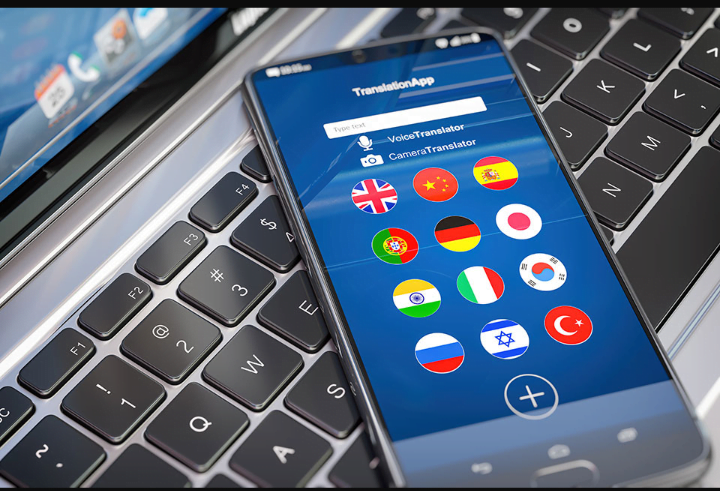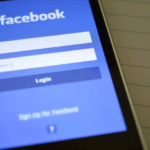No school or language classes are needed as the best apps for language learning are here to take over the task of teaching you several languages more smoothly and easily.
Being able to speak man language is a plus to anyone whenever you get stranded and need to do what Romans do in Rome so to find your way home. This is the year 2021 and some things don’t need a penny taken from you. A typical example is language learning.
Back in Junior High School, I was an avid lover of the French language who always engage my French teacher in conversation in the language just to have him correct me on those I wouldn’t get right. At the same time, I was aiming to be a doctor. Long story short, I ditched the doctor dream for the French language.
As a French language lover, I can now seat at home, working, and download any of the best apps for language leaRNing which wear about to list to take me through that education easily in the comfort of my room in any other language like Russian, Chinese, Spanish and many more depending on the app you are using.
Most of these apps are free to download but subscription-based, you subscribed to what you want to learn and updated with it. In this article, we will be discussing the best apps for language learning in 2021.
BEST LANGUAGE LEARNING APPS 2021
-
Lirica
If you listen to any song enough, you’ll learn all the words through repetition — even if they’re in a different language. But how do you figure out what they mean? This is where the Lirica app comes in. This app is unique in how it approaches teaching Spanish and German. Instead of traditional teaching methods for learning a language, Lirica uses popular music by Latin and reggaeton artists to help you learn language and grammar. On top of learning the language, you’re also immersing yourself in the culture behind it. The app also includes facts about the artist while you’re learning. Lirica is a mobile app to learn languages with the power of music.
Lirica has a one-week free trial and then it’s about $4 per month. For now, the app only offers Spanish and German, but its website says it plans to add more languages in the future.
2. Babbel
Lesson Nine GmbH, operating as Babbel, is a German subscription-based language learning app and e-learning platform, available in various languages since January 2008.
I found Babbel to be the most like a foreign language course you’d see in an online school curriculum. The minimalist layout of the Babbel app helps prevent a new language (French for me) from seeming overwhelming, without making it boring. Each lesson takes you through translations and includes variations of the word or phrase, pictures and whether it’s formal or informal. If it asks you to spell a phrase, the letters are included.
You also get to see the new words you’re learning used in common conversations, listen to them (if you choose to have audio on), repeat the phrases, and learn more about verb groups. The 15-minute language lessons are easy to work into your day — whether it’s on your commute, before bed or on your lunch break. The My Activity module lets you track all your progress.
Babbel is free, or you can subscribe to a package. A three-month subscription is $27, six months costs $46, and one year is $75.
Recommended article: BandCamp, The Great Alternative Of iTunes And Spotify.
3. MONDLY
Mondly is a fun, colourful app that has multiple features to take advantage of even if you don’t subscribe to premium. It offered to show you different conjugations if you tapped on verbs. The app packs images, translations and auditory aids to help your specific learning style.
The instructor also speaks the words and phrases in a rather melodic way that made it easier for you to recall them (even after trying different languages on different apps).
On top of that, Mondly is offering a huge discount on its Premium features for the next five days. Lifetime access to Premium (which includes all 41 languages) is usually $2,000 annually, but it’s dropped to $90. If you subscribe to Premium, you’ll also get access to special kids lessons.
Mondly is an EdTech company that develops a freemium language-learning platform that includes a website and apps with free and paid courses for 33 languages. The company also offers lessons in virtual and augmented reality
4. DUOLINGO
The app’s colourful interface and short, game-like exercises are highly enjoyable. The app doesn’t restrict how many languages you can try to learn at the same time (I think two is a good maximum if you want to retain anything).
To make sure you don’t get rusty on the basics, even if you’ve “mastered” a skill by reaching a higher level, the skill can still “shatter” if you don’t review it consistently. Practice the skill again and it’ll repair itself.
Duolingo is an American language-learning website and mobile app, as well as a digital language proficiency assessment exam. The company uses a freemium model: the app and the website are accessible without charge, although Duolingo also offers a premium service for a fee
I like Duolingo’s user-friendly layout, and the “streak” feature, which motivates you to keep going by tracking the number of days you’ve reached your point goal. In the app, you can access resources such as Duolingo Stories, which are short audio stories that allow you to check your comprehension skills as you go. Subscribe to Premium for $7 per month which includes an ad-free experience, downloadable lessons, and unlimited “health.”
5. MEMRISE
One of the favourite parts of Memrise is the app’s use of short videos to show how real locals express different phrases in conversation. As well as showing you the phrase’s literal translation and explained its gendered usage. The app also helps you spot patterns in the language to make it easier to improve your skills.
A few lessons are available for free daily, but you can tap Upgrade in the app and choose from a monthly subscription ($9 a month), an annual subscription ($7.50 a month) or a one-time payment of $140 for lifetime access.
Memrise is a British language platform that uses spaced repetition of flashcards to increase the rate of learning. It is based in London, UK. Memrise offers user-generated content on a wide range of other subjects
6. BUSUU
When you sign up for Busuu, you select the language you want to learn, and the app helps you determine how advanced you are with it and why you want to learn it, and to what level. From there, you set a daily study goal, and if you subscribe to the premium plan, it creates a study plan so you’ll reach your goal by a set date. For example, Busuu says if I study three times a week for 10 minutes a day, I’ll be pretty fluent in my chosen language in about eight months.
Premium costs about $6 per month for a year. Even without premium, Busuu offered valuable tools if you want to learn a language. There’s also a Premium Plus option for about $7 per month for extra features.
Busuu is a language learning platform on the web, iOS and Android that allows users to interact with native speakers. There are 12 language courses currently offered: English, Spanish, French, German, Italian, Portuguese, Chinese, Japanese, Polish, Turkish, Russian, and Arabic
Busuu also offers helpful reminders: In addition to listening to a phrase paired with a photo of the corresponding action, Busuu included helpful vocabulary tips (like that “ciao” can mean “hello” or “goodbye”).
7. LEARNING LANGUAGE WITH NETFLIX
While not technically an app, the free Language Learning with Netflix Chrome extension can be helpful on your journey to becoming multilingual. Install the extension and click the icon to launch the catalogue of movie and TV show options. You do need a subscription to Netflix though.
Once you launch the catalogue, you can pick from hundreds of titles that use movies on Netflix to help teach different languages. For example, if you wanted to work on your Spanish, select the language in the dropdown menu, along with the country where you’re using Netflix. If you’re watching in the US, the extension generates 306 titles. To watch one of the films, just click the red “Watch on Netflix” button. Depending on the language you want to learn, you might have fewer titles to pick from.
As the series or movie plays, two sets of subtitles display at the bottom of the screen. One set is your native language and the other is the one you want to learn. The words highlight as they’re spoken, like a karaoke sing-a-long. You can listen to the dialogue phrase by phrase, pause and replay as needed, access a built-in dictionary and more.
8. ROSETTA STONE
Perhaps the best-known language learning service, Rosetta Stone has come a long way since it started in the ’90s. . It’s a lot easier now with the Rosetta Stone app, but you still need at least 30 minutes to complete a Core Lesson.
The iOS app got an update last year that brought augmented reality into the mix. This enables Seek and Speak, which is a scavenger-hunt-style challenge. Point the phone camera at an object and get a translation in the language you’re learning.
Rosetta Stone has a variety of subscription options, depending on the language — for instance, Spanish is $36 for three months, $96 for a year or $179 for lifetime unlimited access to all of its languages.
9. DROPS
The app’s fun, colourful layout definitely made the language (which has its own alphabet) less intimidating. The app shows users each word in the Greek alphabet and the English alphabet, and says the word and shows an image of it. Drops is constantly adding new languages, most recently, the app brought on Ainu, an indigenous Japanese language.
If you don’t subscribe to premium for $10 per month, you have to wait 10 hours to access another lesson, but you can check out your statistics after completing the lesson (correct answers, wrong answers and words learned) and tap on the words you’ve learned to hear them pronounced again (and see them written in the Greek alphabet). This can give you a leg up when your next lesson starts.
10. PIMSLEUR
Pimsleur is an app that offers 51 languages to learn but delivers the information in what is basically the form of a podcast. Essentially, you’ll choose the language you want to learn and begin a 30-minute auditory lesson (which are downloadable and Alexa-compatible). The app also has a driving mode, so you can improve your language skills during long commutes without looking at a screen.
You get a seven-day free trial. An Audio-Only subscription costs $15 a month, while a premium subscription, which includes the 12 top selling-languages, is $20 a month. Features include reading lessons, roleplaying challenges and digital flashcards.
This is our list of the best apps for language learning in 2021 based on our research. If you love this write up, give up a share and drop any topic we couldn’t tap in in the article.







